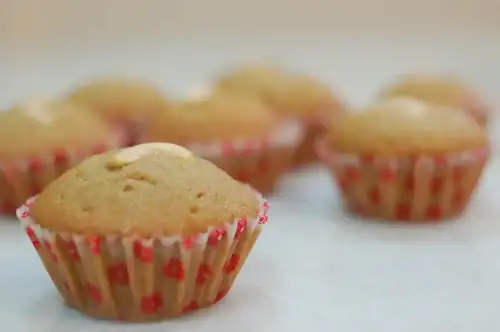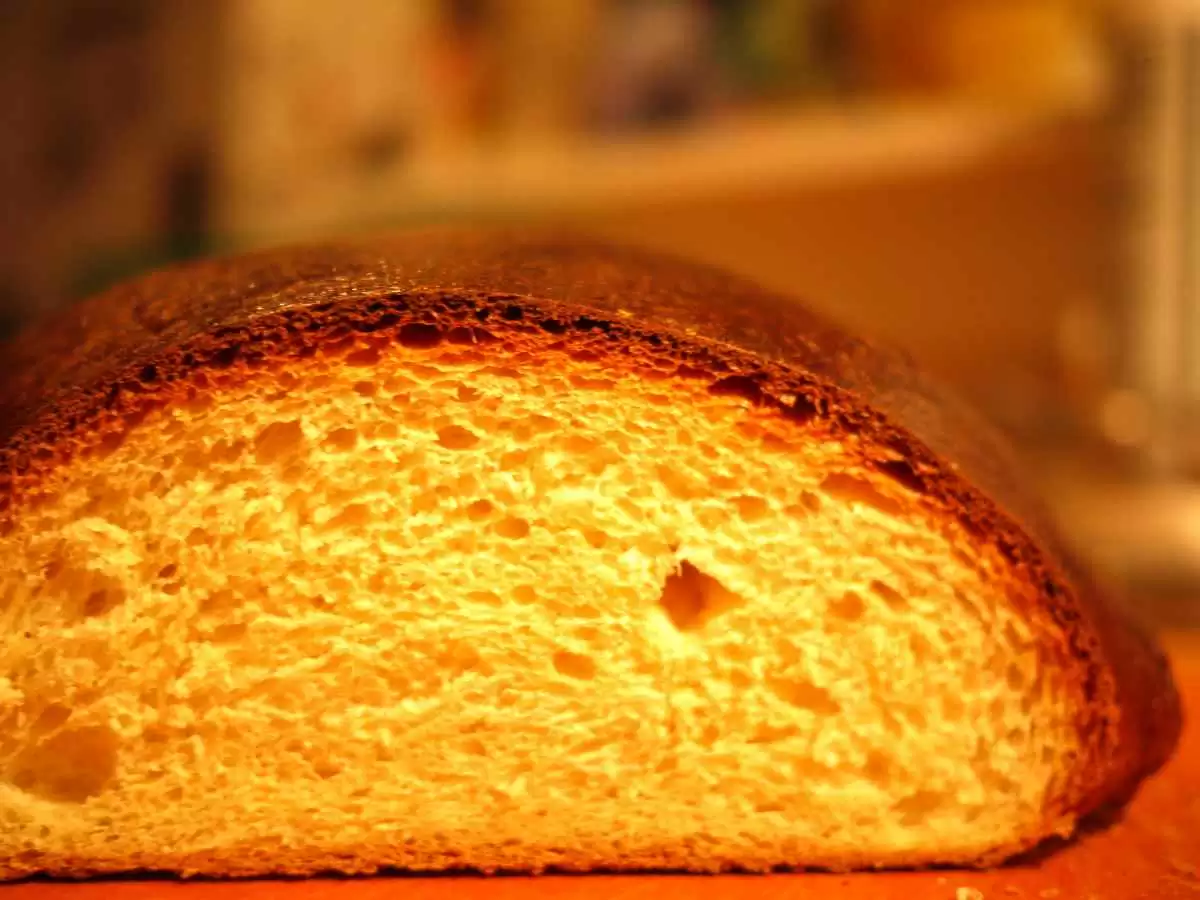Celiac.com 05/20/2025 - Gluten-free baking isn’t just about avoiding wheat—it’s about creating delicious, satisfying baked goods that nourish your body and taste just as good (if not better) than traditional options. For people with celiac disease or gluten sensitivity, learning to bake without gluten can be both empowering and essential to maintaining health.
This guide breaks down everything you need to know—from flour alternatives to pro tips—so you can confidently whip up everything from fluffy pancakes to perfectly chewy cookies.
Why Gluten-Free Baking Matters
Celiac.com Sponsor (A12):
For individuals with celiac disease, consuming even small amounts of gluten can cause intestinal damage, nutrient malabsorption, and a host of painful symptoms. Likewise, those with non-celiac gluten sensitivity may experience fatigue, headaches, or digestive discomfort. Store-bought gluten-free products can be expensive and overly processed, often lacking in fiber, protein, and taste.
Baking at home puts the control back in your hands, allowing you to:
- Avoid cross-contamination
- Customize ingredients for taste and nutrition
- Enjoy fresh, wholesome treats
- Save money
Understanding Gluten’s Role in Baking
To master gluten-free baking, it’s helpful to understand what gluten does. In traditional baking, gluten provides elasticity, helps dough rise, and gives structure to baked goods. Without it, baked goods can become crumbly, dry, or flat unless proper substitutions are used.
That’s where gluten-free flour blends and a few clever strategies come in.
Top Gluten-Free Flour Substitutes (and How to Use Them)
No single gluten-free flour works as a direct replacement for wheat flour in all recipes. Instead, successful gluten-free baking often involves combining two or more flours to mimic the texture, structure, and moisture retention of gluten.
Here are some popular gluten-free flours and what they bring to the table:
1. Almond Flour
- Flavor: Mild, slightly nutty
- Texture: Moist and tender
- Best for: Muffins, cookies, cakes
- Nutrition bonus: High in protein and healthy fats
2. Coconut Flour
- Flavor: Sweet and coconutty
- Texture: Absorbs a lot of moisture
- Best for: Pancakes, quick breads
- Tip: Use sparingly—typically no more than 25% of your flour mix, and increase liquid in the recipe
3. Brown Rice Flour
- Flavor: Neutral
- Texture: Slightly gritty unless finely ground
- Best for: All-purpose blends, breading, muffins
- Note: Pairs well with starches like tapioca or potato starch
4. Sorghum Flour
- Flavor: Mild and wheat-like
- Texture: Soft
- Best for: Breads, tortillas, all-purpose mixes
5. Tapioca Starch (Flour)
- Function: Adds chewiness and lightness
- Best for: Breads, pizza crusts, cookies
- Tip: Often used in combination with heavier flours
6. Arrowroot Powder
- Function: Lightens textures, works as a thickener
- Best for: Cakes, muffins, sauces
7. Chickpea (Garbanzo Bean) Flour
- Flavor: Earthy and savory
- Best for: Savory dishes, flatbreads, and nutrient-dense baking
- Nutrition bonus: Rich in fiber, iron, and plant protein
DIY Gluten-Free Flour Blend Recipes
To replace all-purpose wheat flour, try mixing your own gluten-free blend. Here’s a basic starting point:
Basic All-Purpose Gluten-Free Flour Blend
- 2 cups brown rice flour
- ⅔ cup potato starch
- ⅓ cup tapioca starch
- 1 teaspoon xanthan gum (optional, for structure)
This blend works well in muffins, cookies, cakes, and pancakes.
Whole-Grain Blend (More Fiber and Protein)
- 1 cup sorghum flour
- 1 cup millet flour
- ⅔ cup potato starch
- ⅓ cup tapioca starch
- 1 teaspoon psyllium husk powder or xanthan gum
Perfect for sandwich breads and more nutritious baked goods.
Binders: Replacing Gluten’s Elasticity
Since gluten acts as a binder, it’s important to include something that helps hold your baked goods together. Here are the top options:
Xanthan Gum
- Use ¼ teaspoon per cup of flour for cakes, up to 1 teaspoon per cup for bread.
- Adds stretch and structure
Guar Gum
- Great for cold foods and baking
- Use in similar amounts as xanthan gum
Psyllium Husk
- Ideal for yeast breads
- Adds moisture and binding without gum
- Use 1–2 teaspoons per cup of flour
Pro Tips for Gluten-Free Baking Success
1. Weigh Your Ingredients
Gluten-free flours vary in density. Weighing (instead of measuring by volume) ensures accuracy.
2. Let Batters Rest
Allow your dough or batter to sit for 20–30 minutes before baking. This helps hydrate the flours and improves texture.
3. Add Moisture
Gluten-free baking tends to dry out. Add an extra egg, some yogurt, applesauce, or a splash of milk to keep things tender.
4. Use Smaller Baking Vessels
Smaller pans or muffin tins help gluten-free batters rise better and bake evenly.
5. Check for Doneness Differently
Don't rely solely on toothpick tests. Gluten-free baked goods may feel done but still be gummy inside. Touch, color, and even smell can help guide you.
8 Commercially Available Gluten-Free Universal Flour Mixes
1. King Arthur Measure for Measure Gluten-Free Flour
- Best for: All-purpose baking (cookies, cakes, muffins)
- Key Features: No xanthan gum needed, non-GMO, blends rice flour, tapioca starch, and potato starch.
- Why It’s Great: Consistently reliable, doesn’t require recipe adjustments.
2. Bob’s Red Mill 1-to-1 Gluten-Free Baking Flour (Blue Bag)
- Best for: Breads, pancakes, and pastries
- Key Features: Contains xanthan gum, made with sweet rice flour and sorghum.
- Why It’s Great: Affordable and widely available; mimics wheat flour well.
3. Cup4Cup Multipurpose Gluten-Free Flour
- Best for: Professional-quality baking (developed by a pastry chef)
- Key Features: Corn-based, includes milk powder (not dairy-free).
- Why It’s Great: Used by many bakeries; yields tender, non-gritty results.
4. Pamela’s Products Artisan Blend Gluten-Free Flour
- Best for: Yeast breads and pizza dough
- Key Features: Almond flour-based, high-protein blend.
- Why It’s Great: Adds richness and structure; works well in savory recipes.
5. Better Batter Original Gluten-Free Flour
- Best for: Cakes and delicate pastries
- Key Features: Rice and tapioca base, includes xanthan gum.
- Why It’s Great: Fine texture, no aftertaste; certified gluten-free.
6. Namaste Foods Perfect Gluten-Free Blend
- Best for: Allergy-friendly baking (top 8 allergen-free)
- Key Features: No soy, dairy, nuts, or xanthan gum.
- Why It’s Great: Safe for multiple allergies; good for muffins and quick breads.
7. Simple Mills Almond Flour Baking Mix
- Best for: Grain-free, paleo-friendly baking
- Key Features: Almond flour + coconut flour base, no starches.
- Why It’s Great: Nutrient-dense, low-carb option (but not a 1:1 sub for all recipes).
8. GF Jules Gluten Free All Purpose Flour
- Best for: Gluten-free baking
- Key Features: Non-GMO ingredients and superfine milled flour.
- Why It’s Great: Designed as a 1:1 sub for all recipes.
Key Trends for Commercial Flour Mixes:
- Clean labels: Brands like King Arthur and Simple Mills emphasize non-GMO, minimal ingredients.
- Allergy-friendly: Rise in nut-free, top-8-allergen-free options (e.g., Namaste).
- Grain-free demand: Almond/coconut flour blends (e.g., Simple Mills) gained popularity.
Pro Tip:
For yeast-based recipes (bread, pizza), opt for blends with xanthan gum or psyllium husk (like Pamela’s or Better Batter). For cakes, Cup4Cup or King Arthur work best.
What This Means for People with Celiac Disease or Gluten Sensitivity
Mastering gluten-free baking isn’t just about culinary satisfaction—it’s about reclaiming joy, tradition, and well-being. Whether it’s baking birthday cupcakes for your child, recreating a cherished holiday bread, or simply indulging in a cookie without fear, gluten-free baking offers empowerment and peace of mind.
Because many gluten-free store-bought items are low in nutrients or loaded with fillers, baking at home allows you to:
- Create fiber-rich, nutrient-dense recipes
- Use whole food ingredients
- Eliminate cross-contamination risk
- Satisfy cravings without compromising health
If you’re newly diagnosed with celiac disease, this skill is especially important. It helps you transition from restriction to abundance and gives you back a sense of control in the kitchen.
Final Thoughts
Gluten-free baking is an art and a science, but it’s absolutely achievable with the right tools and mindset. With time, you'll learn which flour blends suit your taste and which binders work best for your favorite treats. Don’t be afraid to experiment, adapt, and have fun.
Whether you’re baking out of necessity or curiosity, remember: every delicious success (and even every failed attempt) is a step toward mastering a gluten-free lifestyle that’s safe, satisfying, and entirely your own.













Recommended Comments
Create an account or sign in to comment
You need to be a member in order to leave a comment
Create an account
Sign up for a new account in our community. It's easy!
Register a new accountSign in
Already have an account? Sign in here.
Sign In Now